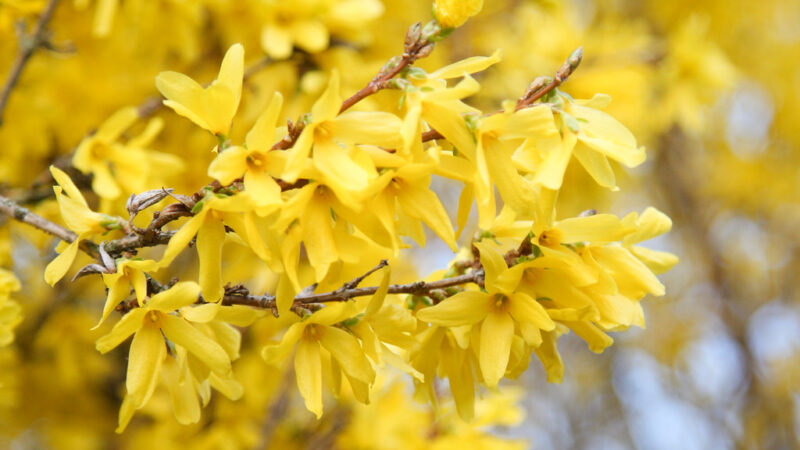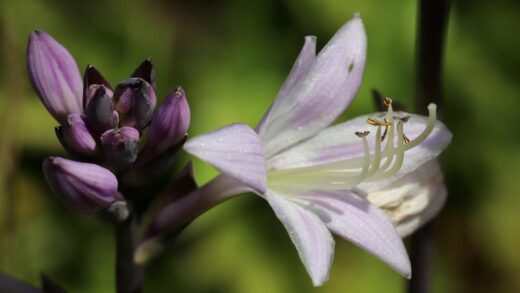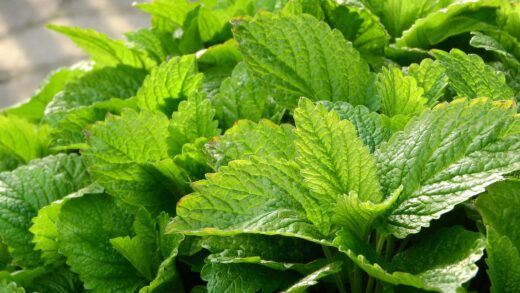Light requirements of forsythia

The single most critical factor determining the success and floral performance of a forsythia shrub is the amount of sunlight it receives. Forsythia is an unequivocal sun-worshipper, and its entire life cycle, particularly its ability to produce the abundant yellow blossoms for which it is prized, is directly linked to light exposure. While the shrub may survive in shadier conditions, it will not thrive, and its appearance will be a pale imitation of its potential glory. Understanding the profound impact of sunlight on this plant is fundamental to choosing the right location and ensuring a breathtaking spring display year after year.
To put it simply, forsythia needs full sun to perform at its best. In horticultural terms, “full sun” is defined as a minimum of six hours of direct, unfiltered sunlight per day. This light energy is the fuel for photosynthesis, the process by which the plant creates the sugars it needs for growth, maintenance, and, most importantly, the development of flower buds. When a forsythia is bathed in sunlight for a significant portion of the day, it has the energy reserves to produce a dense, robust structure and set an abundance of flower buds along its stems during the summer.
The consequences of inadequate light are stark and easily observable. A forsythia grown in partial or full shade will exhibit several tell-tale signs of light deprivation. It will likely develop a leggy, sparse growth habit, with long, weak stems that stretch out in a desperate attempt to reach for more light. The foliage may be a paler green, and the overall density of the shrub will be significantly reduced, resulting in a thin, gangly appearance that lacks the graceful, arching form of a healthy specimen.
Most notably, the flowering of a shade-grown forsythia will be severely compromised. Instead of a spectacular cascade of brilliant yellow covering every stem, you will likely see only a few scattered blossoms, often concentrated on the parts of the plant that receive the most incidental light. In many cases, a forsythia languishing in deep shade may not produce any flowers at all. This is why site selection is paramount; no amount of perfect soil, water, or fertilizer can compensate for a lack of sufficient sunlight.
The definition of full sun
When discussing the light requirements for plants like forsythia, the term “full sun” is used frequently, but its precise meaning is essential for successful gardening. Full sun indicates that a plant needs to be exposed to at least six hours of direct, unobstructed sunlight each day during the growing season. This is not just bright light or dappled shade; it means the sun’s rays are directly hitting the leaves of the plant for this minimum duration. For optimal flowering, a forsythia will be even happier with eight or more hours of direct sun.
More articles on this topic
The intensity of the sunlight also matters. Morning sun is generally less intense and cooler than the harsh afternoon sun. While forsythia is tough enough to handle strong afternoon sun, a location that provides consistent sunlight throughout the day is ideal. When choosing a planting site, it is crucial to observe how the sun moves across your property at different times of the day and throughout the seasons. A spot that seems sunny in the spring may become shadier in the summer as deciduous trees leaf out.
It is also important to consider potential obstructions that could limit sunlight. This includes not only large trees and buildings but also fences, other shrubs, and even the shadow cast by your own house. Before planting, monitor your chosen spot for a full day to get an accurate assessment of how many hours of direct sun it truly receives. This simple act of observation can prevent the future disappointment of a non-flowering shrub and the labor of having to transplant it later.
In return for providing these light conditions, forsythia will reward you generously. The direct correlation between the hours of sunlight received and the quantity of flowers produced is one of the most straightforward relationships in the garden. More sun directly translates to more energy, which in turn fuels the creation of a greater number of flower buds. If your forsythia is not blooming well, the very first question you should ask yourself is whether it is truly receiving at least six hours of direct sun each day.
The effects of insufficient light
The impact of insufficient light on a forsythia shrub is multifaceted, affecting its growth, health, and flowering capacity. The most obvious and disappointing consequence is a significant reduction in blooms. A forsythia relegated to a shady corner of the garden simply does not have the photosynthetic energy required to initiate and develop a large number of flower buds. The plant will prioritize its survival, allocating its limited energy resources to basic functions like leaf and stem growth, with flowering becoming a low-priority luxury it cannot afford.
More articles on this topic
Beyond the lack of flowers, the plant’s entire structure will be compromised. In a process known as etiolation, the stems will become elongated, thin, and weak as they stretch towards the nearest light source. This results in a “leggy” and open growth habit, which is a stark contrast to the dense, gracefully arching mound that a healthy, sun-grown forsythia develops. The internal branches will be sparse, and the overall appearance will be one of weakness and poor vigor.
Foliage quality will also suffer in low-light conditions. The leaves may be smaller and a paler shade of green compared to the vibrant, deep green foliage of a plant growing in full sun. This is because the plant produces less chlorophyll when it is not exposed to adequate light. This reduction in chlorophyll further hampers its ability to photosynthesize efficiently, creating a negative feedback loop that contributes to the plant’s overall decline in health and vitality.
Furthermore, a forsythia weakened by a lack of sunlight is more susceptible to other problems, including fungal diseases and pest infestations. The poor air circulation in a shady, damp location, combined with the plant’s weakened state, creates an ideal environment for diseases like powdery mildew and leaf spot to take hold. A plant that is stressed from a lack of its most fundamental resource is simply less able to defend itself against secondary threats, compounding its problems.
Optimizing placement for sunlight
To ensure your forsythia receives the light it craves, strategic placement within your landscape is key. The ideal location is an open area far from the shade cast by mature trees, buildings, or other tall structures. A south-facing or west-facing position is often best, as these exposures typically receive the most hours of direct sun throughout the day. Consider the full mature size of the forsythia variety you are planting to ensure it will not eventually be shaded by faster-growing neighboring plants.
When designing a mixed border or foundation planting, always place sun-loving shrubs like forsythia on the sunniest side of the arrangement. Use them as a vibrant backdrop for shorter, sun-loving perennials. If you are planting a forsythia hedge, ensure the entire line will receive even sunlight. If one end of the hedge is in more shade, it will grow less vigorously and flower less profusely than the other end, resulting in an uneven and patchy appearance.
If you have an existing forsythia that is performing poorly in a shady spot, the best solution is often to move it. Transplanting is best done in the late autumn after the leaves have dropped or in early spring before new growth begins. While it is a labor-intensive task, relocating a light-starved forsythia to a sunny new home can have a transformative effect. Within a season or two, you will likely see a dramatic improvement in its density, health, and, most importantly, its ability to produce a spectacular floral display.
For gardeners with limited sunny space, there are options to consider. Choosing a more compact or dwarf variety of forsythia can allow you to fit it into a smaller sunny patch where a larger shrub would not work. You can also practice strategic pruning on nearby trees, if possible, to thin the canopy and allow more sunlight to reach the ground. However, the fundamental principle remains: to witness the true beauty of a forsythia, you must provide it with the abundant sunlight it requires.
📷 Flickr / Szerző: Maja Dumat / Licence: CC BY 2.0



















